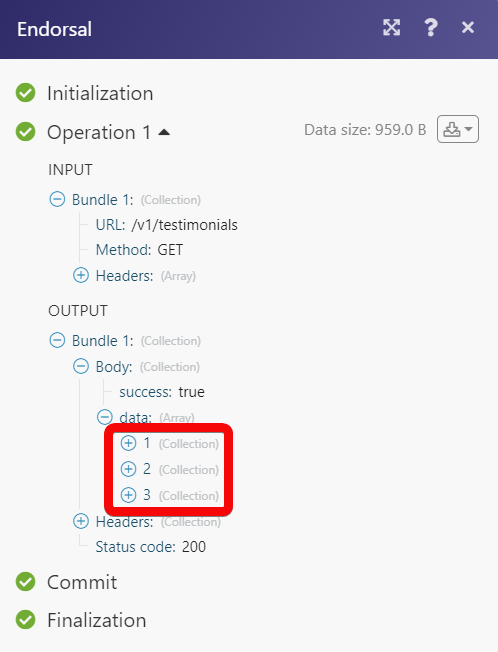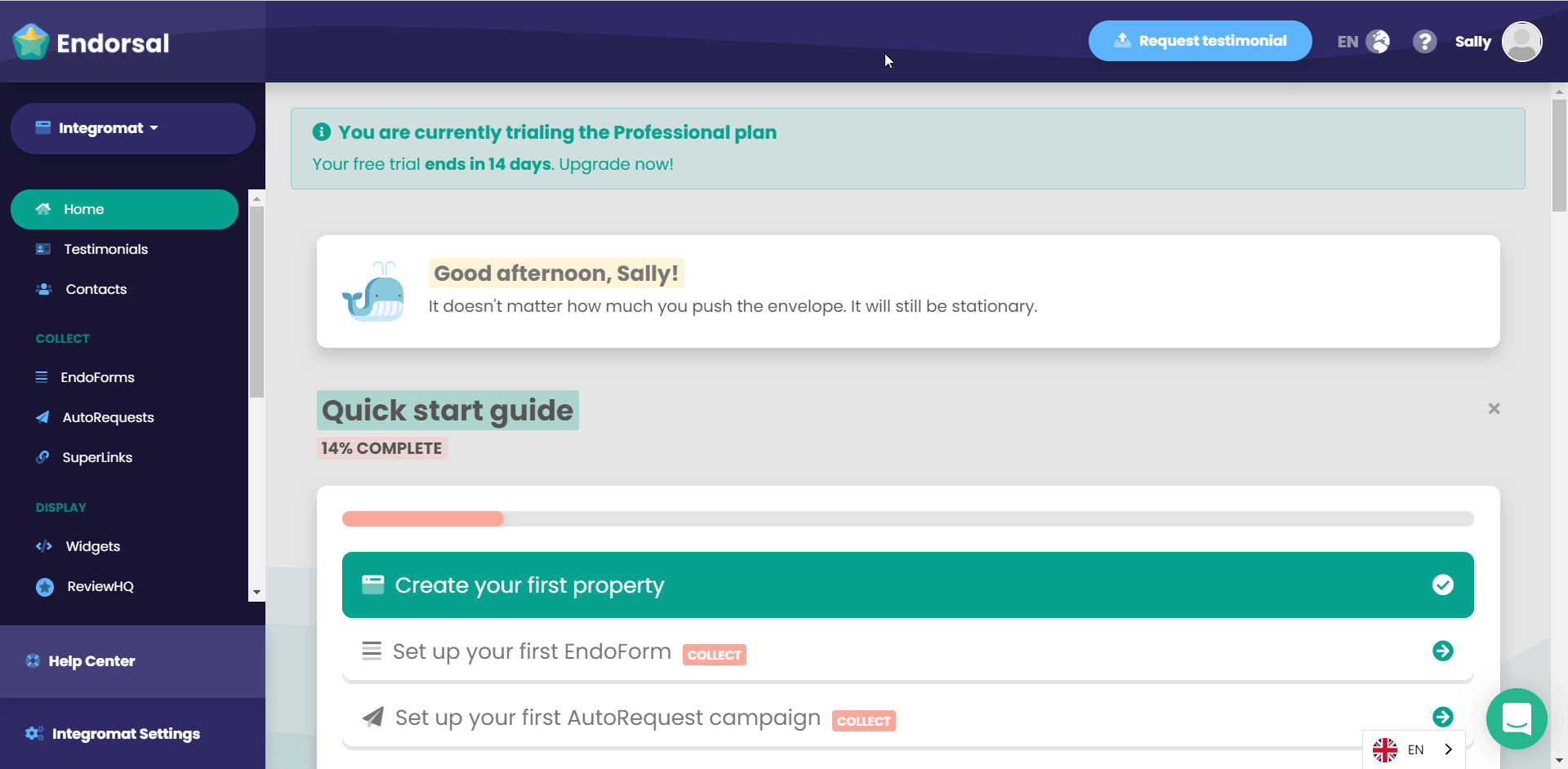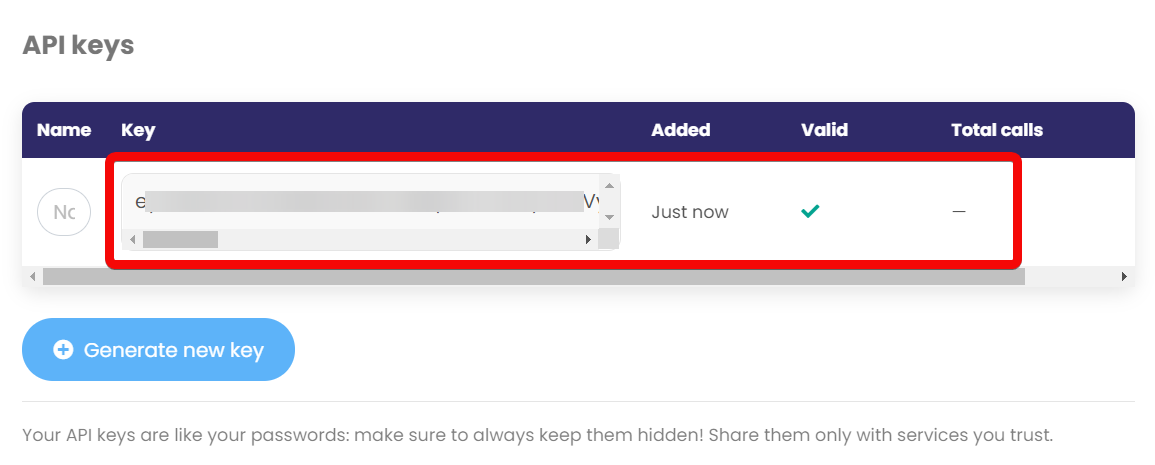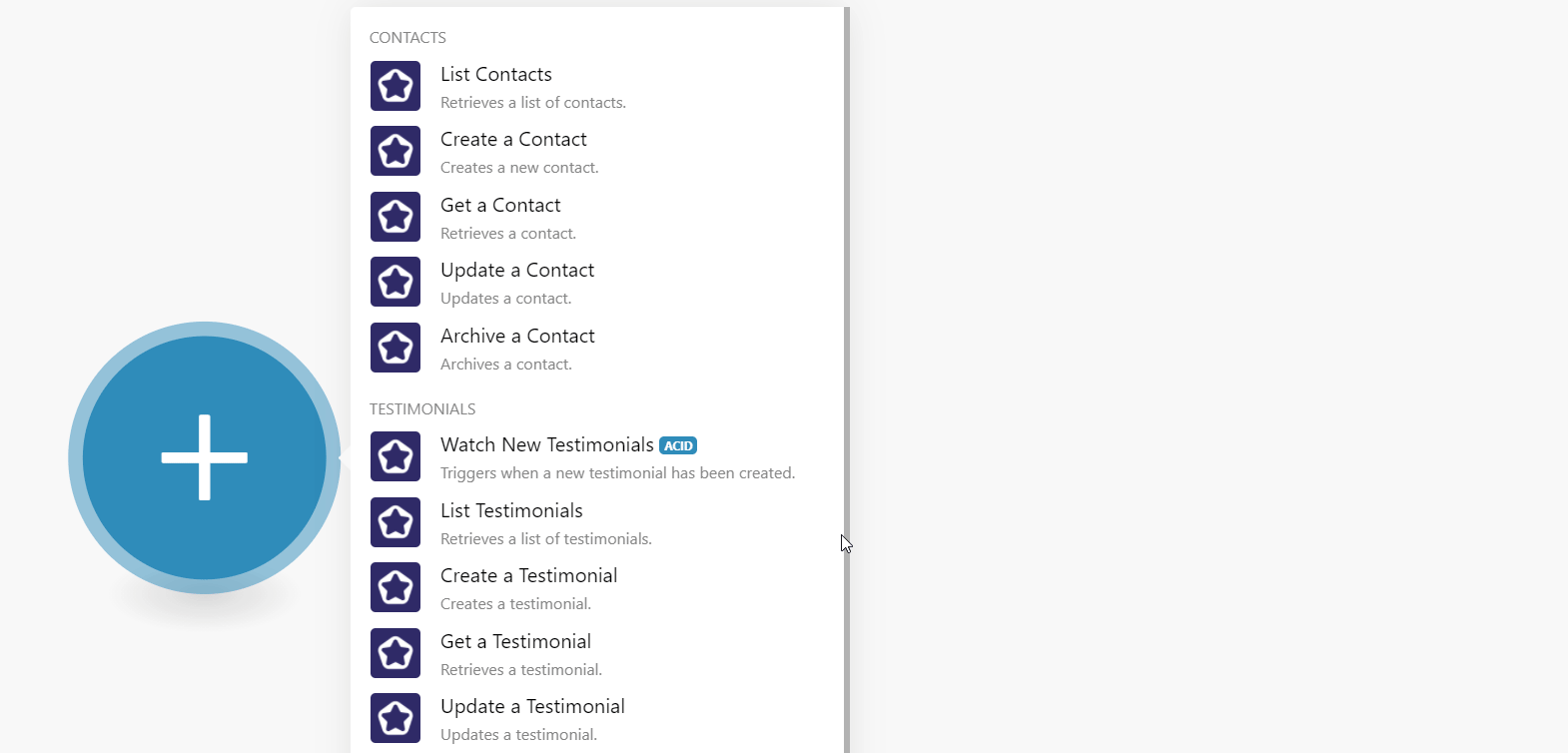| Active with remarks |
|---|
| This application needs additional settings. Please follow the documentation below to create your own connectionUnique, active service acces point to a network. There are different types of connections (API key, Oauth…). More. |
The Endorsal modulesThe module is an application or tool within the Boost.space system. The entire system is built on this concept of modularity. (module - Contacts) More allow you to monitor, create, update, send, retrieve, list, archive, and delete the contacts, and testimonials in your Endorsal account.
Prerequisites
-
An Endorsal account – create an account at endorsal.io/.
![[Note]](https://docs.boost.space/wp-content/themes/bsdocs/docs-parser/HTML/css/image/note.png) |
Note |
|---|---|
|
The moduleThe module is an application or tool within the Boost.space system. The entire system is built on this concept of modularity. (module - Contacts) More dialog fields that are displayed in bold (in the Boost.spaceCentralization and synchronization platform, where you can organize and manage your data. More IntegratorPart of the Boost.space system, where you can create your connections and automate your processes. More scenarioA specific connection between applications in which data can be transferred. Two types of scenarios: active/inactive. More, not in this documentation article) are mandatory! |
To connect your Endorsal account to Boost.space Integrator you need to obtain the API Key from your Endorsal account and insert it in the Create a connection dialog in the Boost.space Integrator module.
-
Log in to your Endorsal account.
-
Click Your Profile Icon > API > Generate New API Key.
-
Copy the API Key to your clipboard.
-
Go to Boost.space Integrator and open the Endorsal module’s Create a connection dialog.
-
In the Connection name field, enter the connection name.
-
In the API Key field, enter the API key copied in step 3 and click Continue.
The connection has been established.
Retrieves a list of contacts.
|
Connection |
|
|
Limit |
Set the maximum number of contacts Boost.space Integrator should return during one execution cycleA cycle is the operation and commit/rollback phases of scenario execution. A scenario may have one or more cycles (one is the default).. The default value is 10. |
Creates a new contact.
|
Connection |
|
|
|
Enter (map) the contact’s email address. For example, |
|
Phone |
Enter (map) the contact’s phone number. For example, |
|
Name |
Enter (map) the contact’s name. |
|
External ID |
Enter (map) the contact’s external ID of the platform from where the contact was imported. For example, |
|
Imported From |
Enter (map) the platform name from which the contact was imported. |
|
Avatar |
Enter (map) the URL address to the contact’s profile image. |
|
Location |
Enter (map) the contact’s location. For example, |
|
Position |
Enter (map) the contact’s job title in the company. For example, |
|
Company |
Enter (map) the contact’s company name. For example, |
|
Website |
Enter (map) the company’s website URL address. |
|
Property ID |
Enter (map) the Property ID to which the contact belongs. |
|
Custom Attributes |
Add any additional attributes for the contact: Key Enter (map) the key name. For example, Value Enter (map) the key value. For example, first name is |
Retrieves a contact.
|
Connection |
|
|
Contact ID |
Select or map the Contact ID whose details you want to retrieve. |
Updates a contact.
|
Connection |
|
|
Contact ID |
Select or map the Contact ID whose details you want to update. |
|
Name |
Enter (map) the contact’s name. |
|
|
Enter (map) the contact’s email address. For example, |
Archives a contact.
|
Connection |
|
|
Contact ID |
Select or map the Contact ID you want to archive. |
TriggersEvery scenario has a trigger, an event that starts your scenario. A scenario must have a trigger. There can only be one trigger for each scenario. When you create a new scenario, the first module you choose is your trigger for that scenario. Create a trigger by clicking on the empty module of a newly created scenario or moving the... when a new testimonial has been created.
|
Connection |
|
|
Limit |
Set the maximum number of testimonials Boost.space Integrator should return during one execution cycle. The default value is 20. |
Retrieves a list of testimonials.
|
Connection |
|
|
Limit |
Set the maximum number of testimonials Boost.space Integrator should return during one execution cycle. The default value is 10. |
Creates a new testimonial.
|
Connection |
|
|
Name |
Enter (map) the testimonial name. |
|
Comments |
Enter (map) additional comments for the testimonial. |
|
Property ID |
Enter (map) the Property ID applicable to the testimonial. |
|
Rating |
Select or map the rating of the testimonial between one and five. |
|
Avatar |
Enter (map) the URL address of the contact’s profile image. |
|
|
Enter (map) the contact’s email address applicable to the testimonial. For example, |
|
Location |
Enter (map) the contact’s location who has provided the testimonial. For example, |
|
Position |
Enter (map) the contact position in the company. For example, |
|
Company |
Enter (map) the company name. For example, |
|
Approved |
Select or map the testimonial approval statusCreate statuses for each module separately to create an ideal environment for efficient and consistent work. More:
|
|
Featured |
Select whether the testimonial is featured on the company’s website:
|
|
Added |
Enter (map) the date the testimonial is added. See the list of supported date and time formats. |
Retrieves a testimonial.
|
Connection |
|
|
Testimonial ID |
Select or map the Testimonial ID whose details you want to retrieve. |
Updates a testimonial.
|
Connection |
|
|
Testimonial ID |
Select or map the Testimonial ID whose details you want to update. |
|
Name |
Enter (map) the testimonial name. |
|
Comments |
Enter (map) additional comments for the testimonial. |
|
Property ID |
Enter (map) the Property ID applicable to the testimonial. |
|
Rating |
Select or map the rating of the testimonial between one and five. |
|
Avatar |
Enter (map) the URL address of the contact’s profile image. |
|
|
Enter (map) the contact’s email address applicable to the testimonial. For example, |
|
Location |
Enter (map) the contact’s location who has provided the testimonial. For example, |
|
Position |
Enter (map) the contact position in the company. For example, |
|
Company |
Enter (map) the company name. For example, |
|
Approved |
Select or map the testimonial approval status:
|
|
Featured |
Select whether the testimonial is featured on the company’s website:
|
|
Added |
Enter (map) the date the testimonial is added. See the list of supported date and time formats. |
Deletes a testimonial.
|
Connection |
|
|
Testimonial ID |
Select or map the Testimonial ID you want to delete. |
Performs an arbitrary authorized API call.
|
Connection |
||||
|
URL |
Enter a path relative to
|
|||
|
Method |
Select the HTTP method you want to use: GET to retrieve information for an entry. POST to create a new entry. PUT to update/replace an existing entry. PATCH to make a partial entry update. DELETE to delete an entry. |
|||
|
Headers |
Enter the desired request headers. You don’t have to add authorization headers; we already did that for you. |
|||
|
Query String |
Enter the request query string. |
|||
|
Body |
Enter the body content for your API call. |
The following API call returns all the testimonials from your Endorsal account:
URL:
/v1/testimonials
Method:
GET
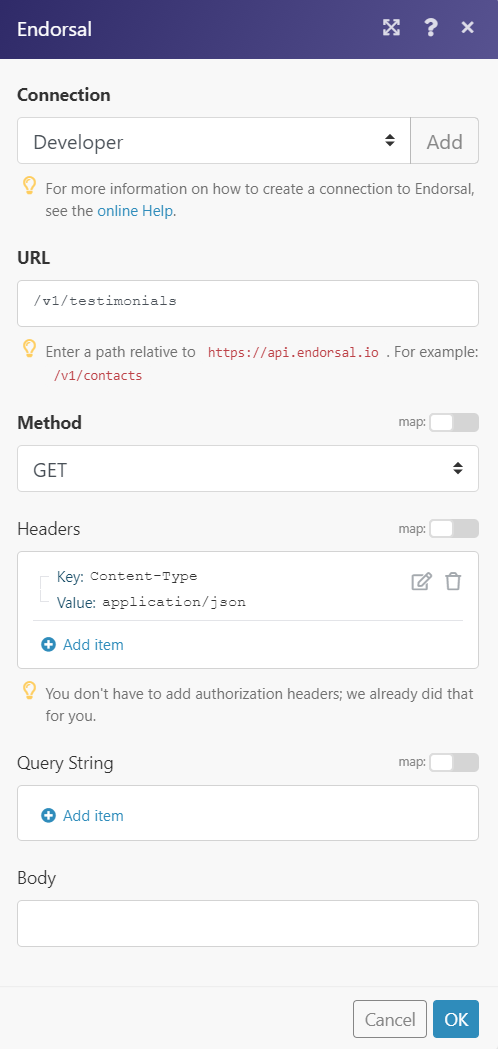
Matches of the search can be found in the module’s Output under BundleA bundle is a chunk of data and the basic unit for use with modules. A bundle consists of items, similar to how a bag may contain separate, individual items. More > Body > data.
In our example, 3 testimonials were returned:
